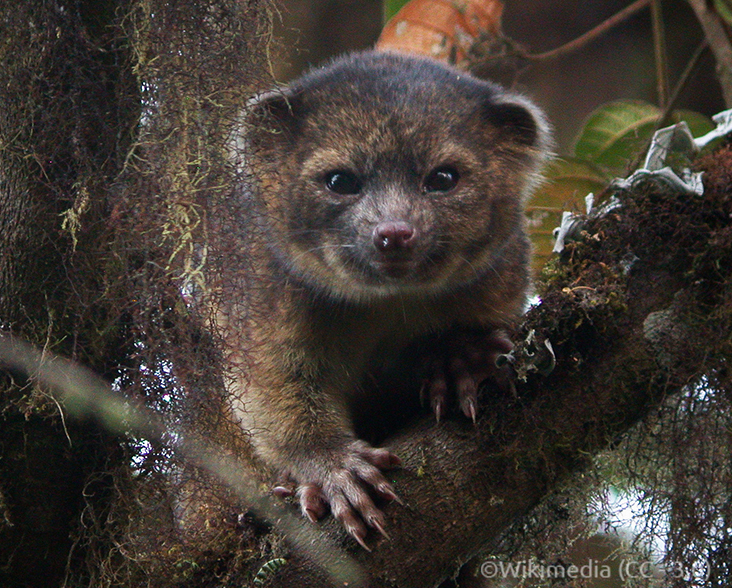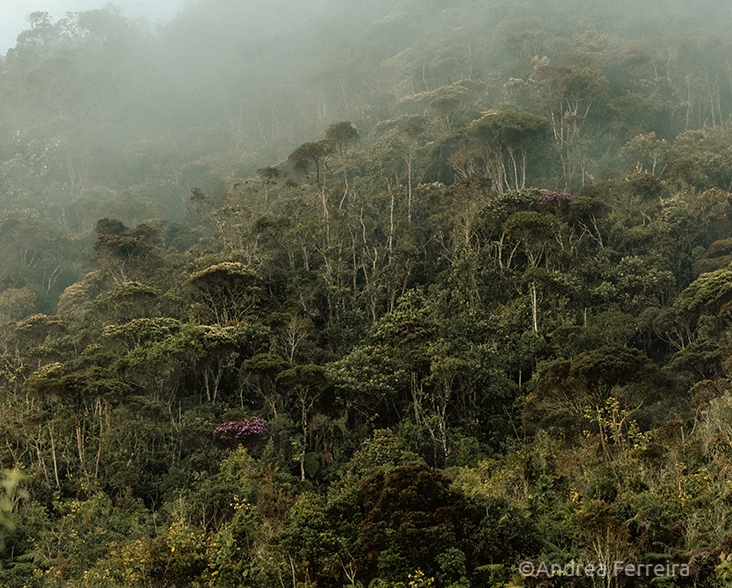Species Data
Class: Mammalia
Order: Carnivora
Family: Procyonidae
Scientific Name: Bassaricyon neblina
IUCN Red List status: Near Threatened
Description
The sweet-faced Olinguito is a mammal belonging to racoon family Procyonidae. With a rounded face, short muzzle, and small, heavily furred ears, it has been likened to a teddy bear. As the smallest procyonid, adults weigh slightly less than a kilogram, with a body length of 35 centimetres and bushy, banded tails of 35-42 centimetres. They are best distinguished by their black-tipped, thick, woolly fur, which ranges from reddish brown to vibrant orange.
Having only been classified as a new species in 2013, Olinguitos were previously confused with other members of the Bassaricyon genus, commonly referred to as Olingos, for more than 100 years. Based on morphological distinctions, three additional subspecies of Olinguito have been described in addition to the original B. neblina neblina: B. n. osborni, B. n. hershkovitzi, and B. n. ruber.
Behaviour
Despite belonging to the order Carnivora based on their dental arrangement, the Olinguitos are omnivorous frugivores. Seeming to prefer mostly fruit, they have so far also been observed enjoying nectar and certain insects. As an arboreal species that rarely ventures to the ground, they are skilled jumpers, leaping between trees to their nests high in the forest canopy. Olinguitos are thought to be mainly solitary, with their large eyes especially suited to nocturnal activity. As a newly studied species, there is currently very little known about their mating habits, but mothers are thought to raise a single offspring at a time.


Habitat
In the wild, Olinguitos have been observed exclusively in humid montane rainforests, also known as cloud forests, at high elevations of 1,500-2,800 metres, in the Andes of western Colombia and Ecuador. Their species name Neblina comes from the Spanish word for mist or fog, in reference to the cloud forests they inhabit. Their range is further limited as 63% of historically suitable Olinguito habitat has already been deforested, with only 40,760 square kilometres remaining. Only one location in which the species has been recorded is categorised as a protected area.
Threats and Conservation
Populations of Olinguitos are severely fragmented, and a total population number has not been recorded. While currently evaluated as Near Threatened on the IUCN red list, the number of mature individuals is declining due to their narrow climactic range. The long-term survival of the Olinguito is dependent on the preservation and restoration of remaining cloud forest fragments, with biological corridors to establish connectivity between populations. With cloud forests rapidly disappearing to agriculture and urbanisation, Olinguitos may represent a novel flagship species around which to designate protection for the habitat. WLT partner Fundación Guanacas, has recently successfully released several individuals into the Guanacas Reserve, however, an Action Recovery Plan and systematic monitoring scheme is essential to ensure the future of these reclusive mammals.
